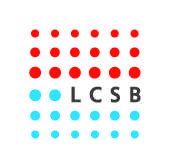Luxembourg Centre for Systems Biomedicine
| Luxembourg Centre for Systems Biomedicine | |
|---|---|
|
| |
| Location | Esch/Alzette, Campus Belval, Luxembourg |
| Host | University of Luxembourg |
| Field of Research | Systems Biology, Systems Biomedicine |
| Director | Prof. Dr. Rudi Balling |
| Website | http://wwwen.uni.lu/lcsb |
The Luxembourg Centre for Systems Biomedicine (LCSB) is one of two interdisciplinary research centres at the University of Luxembourg. Since September 2011, the LCSB is based on the new university campus Esch-Belval.
Research
The LCSB was founded in 2009 as the first biomedical research centre of the University of Luxembourg by the founding director Prof. Dr. Rudi Balling. The main goal of the LCSB is to accelerate biomedical research by closing the link between systems biology and medical research.
The LCSB currently counts about 230 employees and 15 research groups in the areas of experimental neurobiology, cell metabolism, computational biology, bioinformatics, machine learning, eco-systems biology, and translational medicine. Collaboration between biologists, medical doctors, computer scientists, physicists and mathematicians is offering new insights into complex systems like cells, organs and whole organisms in both health and disease states. These findings are essential for understanding principal mechanisms of disease pathogenesis and for developing new tools in diagnostics and therapy.
Close collaboration with clinicians and patients are of utmost importance to the LCSB. Neurodegenerative diseases like Parkinson’s disease and description of diseases as networks are at the focus of the LCSB’s research. It aims to contribute to earlier diagnosis and personalized treatment, for instance through its coordinating role in the recently established National Centre of Excellence in Research on Parkinson’s Disease.
The Centre has established strategic partnerships with leading biomedical laboratories worldwide and with all major biological and medical research units in Luxembourg. The LCSB fosters collaboration with industrial partners and accelerates the translation of fundamental research results into (clinical) applications.
See also
References
External links
- LCSB web site
- University of Luxembourg – official website
- National Centre of Excellence in Research on Parkinson's Disease – official website
